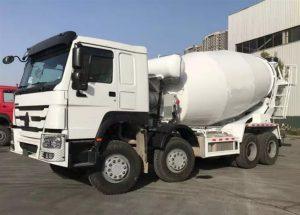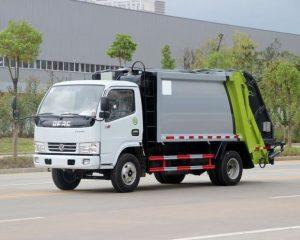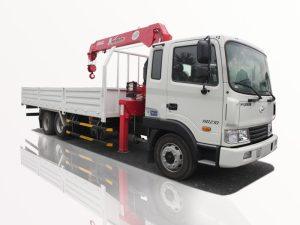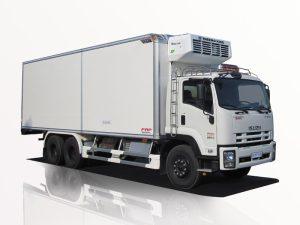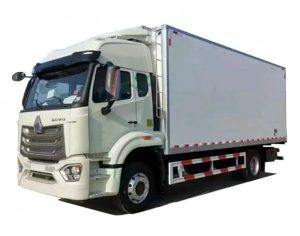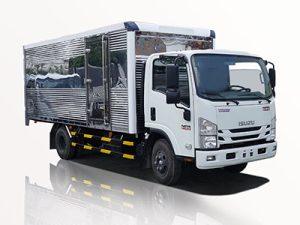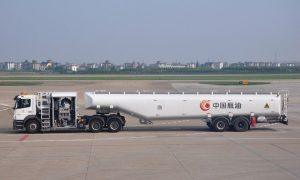Monday to Saturday - 8:00 -17:30
Sewage Suction Truck: Everything You Need to Know
Introduction
A sewage suction truck, also known as a vacuum truck, is a specialized vehicle designed to transport liquid waste, particularly sewage, sludge, and other hazardous materials. These trucks play a vital role in waste management and sanitation, ensuring that our neighborhoods remain clean and hygienic. With a robust vacuum system and large tank capacity, sewage suction trucks are essential for both municipal and commercial services. In this article, we’ll explore the different types of sewage suction trucks, their applications, maintenance tips, and answer frequently asked questions to give you a better understanding of this crucial piece of equipment.
Types of Sewage Suction Trucks
Sewage suction trucks come in various sizes and designs, each tailored for specific applications. Below are the primary types:
1. Standard Vacuum Trucks
Standard vacuum trucks are the most common type, equipped with a vacuum system that can efficiently suck up liquids and sludge. They typically have a tank capacity ranging from 1,000 to 3,000 gallons.
2. Combination Trucks
Combination trucks combine vacuum and jetting capabilities. This allows them to not only suction waste but also clean pipes using high-pressure water jets, making them very versatile for maintenance tasks.
3. Industrial Vacuum Trucks
Industrial vacuum trucks are larger and more powerful, often used in heavy-duty applications such as gas stations, mining operations, and chemical facilities. They can handle a wide range of materials, including hazardous waste.
4. Septic Tank Trucks
Septic tank trucks are specifically designed for servicing septic systems. They have specialized pumps to handle thick sludge and typically come equipped with specialized fittings for attaching to septic tanks.
Applications of Sewage Suction Trucks
Understanding the applications of sewage suction trucks can help municipalities and businesses make decisions about waste management and sanitation. Here are some key applications:
1. Municipal Sewage Management
Sewage suction trucks are essential for local governments to maintain public sanitation. They regularly clean sewer systems, storm drains, and lift stations.
2. Industrial Waste Management
Industries generate various liquid waste products that need proper disposal. Vacuum trucks are used to manage these hazardous materials safely and efficiently.
3. Residential Septic Services
For homes with septic systems, sewage suction trucks provide essential services by emptying septic tanks and ensuring the systems work effectively.
4. Emergency Spill Response
In the case of accidental spills, sewage suction trucks can respond quickly to remove hazardous materials, preventing environmental damage and ensuring safety.
How Sewage Suction Trucks Work
The operation of a sewage suction truck involves several key components and steps:
1. Vacuum System
At the core of a sewage suction truck is its vacuum system. This system uses an industrial-grade vacuum pump to create a negative pressure inside the tank. When the suction hose is placed over waste, the vacuum draws the liquid waste into the tank.
2. Tank and Hose
Sewage suction trucks are equipped with a large tank made from durable materials, typically ranging from 1,000 to 3,600 gallons. The hoses used can vary in length and diameter, allowing flexibility in reaching waste sources.
3. Discharge Mechanism
Once the tank is full, the truck must discharge the collected waste. This may be done through a gravity discharge or a pump, sending the waste to a treatment facility or designated disposal site.
Benefits of Using Sewage Suction Trucks
Employing sewage suction trucks presents numerous benefits for both businesses and municipalities:
1. Improved Hygiene and Sanitation
By regularly removing waste from public and private properties, sewer suction trucks help maintain a clean environment, reducing the risk of disease spread.
2. Environmental Protection
Proper waste management through the use of vacuum trucks ensures that hazardous materials do not leak into the environment, protecting groundwater and ecosystems.
3. Efficient Waste Transportation
These trucks are designed for rapid and efficient movement of waste, which saves time and labor compared to manual methods.
4. Versatility
With various applications, sewage suction trucks can be used for diverse tasks, from municipal infrastructure upkeep to emergency responses and industrial waste handling.
Maintenance Tips for Sewage Suction Trucks
Regular maintenance is vital for ensuring that sewage suction trucks operate efficiently and safely. Here are some practical maintenance tips:
1. Regular Inspections
Conduct routine inspections of the vacuum system, hoses, and tank for any signs of wear or damage. Make sure to check for leaks or cracks that might require repairs.
2. Tank Cleaning
Periodically clean the tank to remove any residual waste or buildup. This helps prevent odors and ensures the tank operates efficiently.
3. Pump Maintenance
Lubricate and inspect the vacuum pump according to the manufacturer’s specifications. Regular servicing can prevent pump failures.
4. Hose Replacement
Check hoses for any signs of wear, and replace them if they become cracked or damaged. Proper hose maintenance is crucial for efficient suction.
Common Challenges and Solutions
Operating sewage suction trucks is not without its challenges. Here are some common issues and their solutions:
1. Clogs in the Suction System
Clogs can occur in the hoses or tank, reducing suction power. Regularly inspect and clean the hoses to mitigate this problem.
2. Odor Control
Odors can be an issue for suction trucks, especially during long operations. Utilize deodorizing agents in the tank and ensure timely waste disposal to minimize unpleasant smells.
3. Weight Management
Overloading the truck can lead to mechanical issues. Monitor weight while loading and adhere to the recommended capacity.
Cost Considerations for Sewage Suction Trucks
The costs associated with acquiring and operating sewage suction trucks can vary significantly depending on various factors:
1. Purchase Costs
New sewage suction trucks can range widely in price based on size, capacity, and features. Expect to pay between $100,000 to over $300,000 for advanced models.
2. Maintenance Costs
Ongoing maintenance can represent a significant portion of ownership costs. Budget for regular servicing, repairs, and inspections.
3. Fuel Expenses
Fuel consumption is another important factor. Depending on the engine size and efficiency, owners should factor in fuel costs during daily operations.
4. Training and Labor Costs
Proper operation requires trained personnel, which can entail additional labor costs. Investing in training ensures safety and operational efficiency.
Future Trends in Sewage Suction Trucks
The sewage suction truck industry is evolving, influenced by technological advancements and environmental considerations:
1. Electric and Hybrid Models
As electric vehicles become more popular, manufacturers are exploring electric or hybrid sewage suction trucks to reduce emissions and operational costs.
2. Advanced Technology Integration
Real-time monitoring systems are being integrated into vacuum trucks to monitor waste levels, tank pressure, and operating efficiency.
3. Sustainable Practices
With a growing emphasis on sustainability, companies are focusing on practices that reduce waste and improve recycling efforts, using suction trucks to separate and transport recyclable materials.
Conclusion
Sewage suction trucks play an indispensable role in maintaining sanitation and managing waste. From ensuring public health to protecting the environment, they undertake vital responsibilities across different sectors. As the industry continues to evolve, embracing new technologies and practices, the future of sewage suction trucks looks promising.
FAQ
1. What size sewage suction truck do I need?
Your needs will depend on the scale of operations. For residential services, a smaller truck with a 1,000 to 2,000-gallon capacity may suffice, while larger commercial operations might require tanks of 3,600 gallons or more.
2. How often should a sewage suction truck be serviced?
Regular servicing is recommended every 3-6 months, or more frequently based on usage. Routine check-ups help identify potential issues before they become severe.
3. Can sewage suction trucks handle hazardous waste?
Yes, many industrial vacuum trucks are designed to handle hazardous materials safely. However, it’s crucial to use the appropriate equipment for specific waste types.
4. What are the key components of a sewage suction truck?
The main components include a vacuum pump, waste tank, vacuum hoses, a control panel, and a discharge system.
5. How does a septic tank truck differ from a standard suction truck?
Septic tank trucks are specifically designed with features suitable for septic systems, such as specialized pumps and fittings, enabling them to effectively handle thicker sludge.
6. Are there regulations governing the use of sewage suction trucks?
Yes, regulations vary by location but generally include guidelines for waste disposal, vehicle operation, and environmental protection. Always check local laws to ensure compliance.


